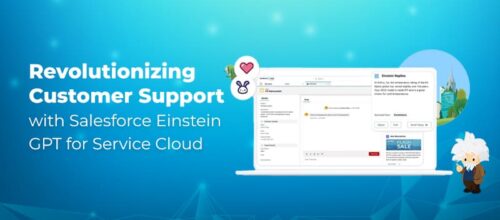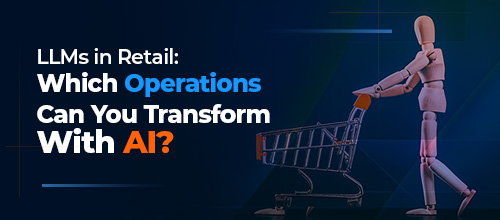webMethods.io: Your Gateway to B2B Integration and Partner 360 Profile

Written by Harini Krishnamurthy
Lead Content Writer
August 9, 2023
Effective collaboration and partnerships are paramount to success in today’s dynamic business landscape. B2B integration and partner 360-degree profiles play pivotal roles in streamlining operations and fostering fruitful relationships with external entities. This blog will explore the critical concepts of B2B integration, partner 360-degree profiles, and partner onboarding, highlighting their importance and benefits for businesses. Additionally, we’ll shed light on how Royal Cyber’s innovative solutions, including webMethods.io, can empower companies to thrive in the interconnected world of collaboration.
B2B Integration: Enhancing Collaboration and Efficiency
B2B integration connects and harmonizes multiple organizations’ business processes, systems, and data. This facilitates automated communication and collaboration among partners, such as suppliers, distributors, manufacturers, and service providers. By integrating systems and data, B2B integration aims to improve efficiency, reduce manual intervention, and enhance data accuracy throughout the supply chain or partnership ecosystem.
Key Features and Benefits of B2B Integration
- Data Exchange: B2B integration involves exchanging various data types between trading partners, purchase orders, invoices, shipping notices, and product catalogs. This data exchange can occur through different communication protocols, including EDI (Electronic Data Interchange), API (Application Programming Interface), and web services.
- Data Synchronization: Ensuring that data is consistent and up to date across all partners’ systems, reducing errors and discrepancies.
- Electronic Data Interchange (EDI): Using standardized formats for exchanging business documents, like purchase orders, invoices, and shipping notices.
- Workflow Automation: B2B integration allows businesses to automate repetitive processes, reducing manual intervention and human errors. For instance, when an order is placed by a retailer, B2B integration can automatically update the supplier’s inventory and initiate the shipping process.
- Real-time Visibility: Providing real-time tracking and visibility into the status of transactions and orders.
- Process Automation: Automating repetitive tasks leads to faster order processing and reduced operational costs.
- Improved Collaboration: Enabling seamless communication and collaboration between partners.
- Scalability: Allowing businesses to handle large transactions efficiently as their partnerships grow.
Read our blog on how to scale B2B EDI Transactions with webMethods.
Partner 360-Degree Profile: Understanding Partners for Informed Decision-making
A partner 360-degree profile is a comprehensive and holistic view of a business’s interactions and relationships with a specific partner or customer. It involves consolidating and analyzing data from various sources to create a complete profile of the partner, enabling better decision-making and improved engagement.
Components of a Partner 360-degree Profile
- Basic Information: Contact details, company name, location, and industry.
- Transaction History: Records of past transactions, orders, and payments.
- Engagement History: History of interactions, communication, and support tickets.
- Preferences and Behavior: Insights into the partner’s preferences, purchase patterns, and behavior.
- Feedback and Sentiment: Feedback provided by the partner and their sentiment towards the business.
- Interactions with Various Departments: Data from sales, marketing, customer service, and other departments that have engaged with the partner.
Benefits of Partner 360-degree Profile
- Personalized Interactions: Businesses can tailor their engagement with partners based on their preferences and behavior.
- Better Decision-making: A comprehensive view of the partner helps make informed decisions.
- Enhanced Relationship Management: Strengthening relationships by understanding partners’ needs and pain points.
- Identifying Growth Opportunities: Identifying areas where the partnership can be expanded or optimized.
- Risk Management: Identifying potential risks and addressing them proactively.
Partner Onboarding
Partner onboarding brings new business partners or vendors into a company’s ecosystem. It includes all the necessary steps and procedures to integrate the new partner’s systems, processes, and data with the existing ones. Proper partner onboarding is essential for establishing strong and efficient collaboration with external entities.
Critical Steps in Partner Onboarding
- Due diligence: Before onboarding a new partner, companies often conduct a thorough evaluation to assess the potential partner’s credibility, reliability, and alignment with their business goals.
- Legal agreements: Drafting and signing appropriate contracts, service level agreements (SLAs), and data sharing agreements are crucial to establish clear terms and expectations between the parties involved.
- Technical integration involves aligning both parties’ IT systems and processes to facilitate smooth data exchange and communication.
- Training and support: Providing necessary training and support to the partner’s personnel ensure they understand the integration process and can effectively use the shared systems.
- Testing and validation: Rigorous integrated system testing helps identify and rectify potential issues before full-scale deployment.
Royal Cyber: Your Trusted Partner in B2B Integration
In B2B integration and partner 360-degree profiles, Royal Cyber stands out as a leader in providing innovative solutions and services. Its cutting-edge platform, webMethods.io, serves as a gateway to seamless data exchange, workflow automation, and real-time visibility, facilitating smooth B2B integration among diverse trading partners. Read our article and get insights on the best practices of webMethods integration and how to leverage it successfully.
As businesses embrace the interconnected landscape of modern commerce, Royal Cyber’s commitment to excellence in B2B integration, partner 360-degree profiles, and partner onboarding prove instrumental in optimizing operations and driving growth. By partnering with Royal Cyber, businesses can navigate complexities and unlock new opportunities for mutual success.
Conclusion
B2B integration and partner 360-degree profiles are essential to modern business strategies. By integrating systems and data, businesses can streamline collaboration and enhance efficiency with external partners. Partner 360-degree profiles offer comprehensive insights into partner interactions, enabling informed decision-making and personalized engagements. Proper partner onboarding establishes strong collaborations, driving mutual growth and success.
With Royal Cyber’s expertise and webMethods.io platform, businesses can thrive in the interconnected world of collaboration and partnerships. Explore the power of B2B integration and partner 360-degree profiles with Royal Cyber and unlock new horizons for your business. For more information, please email us at [email protected] or visit www.royalcyber.com.



